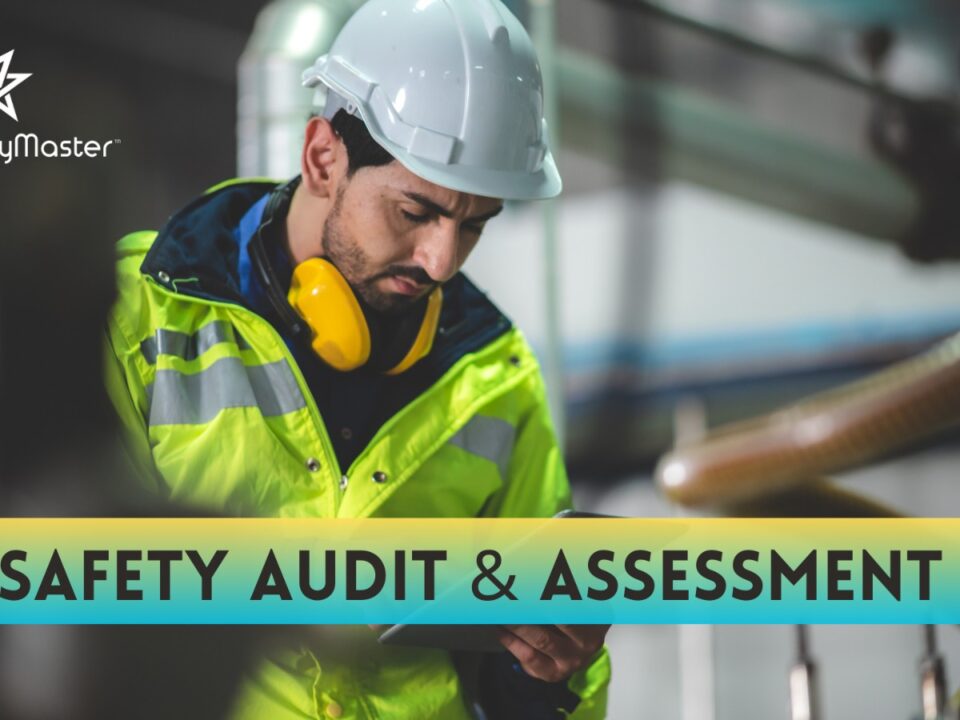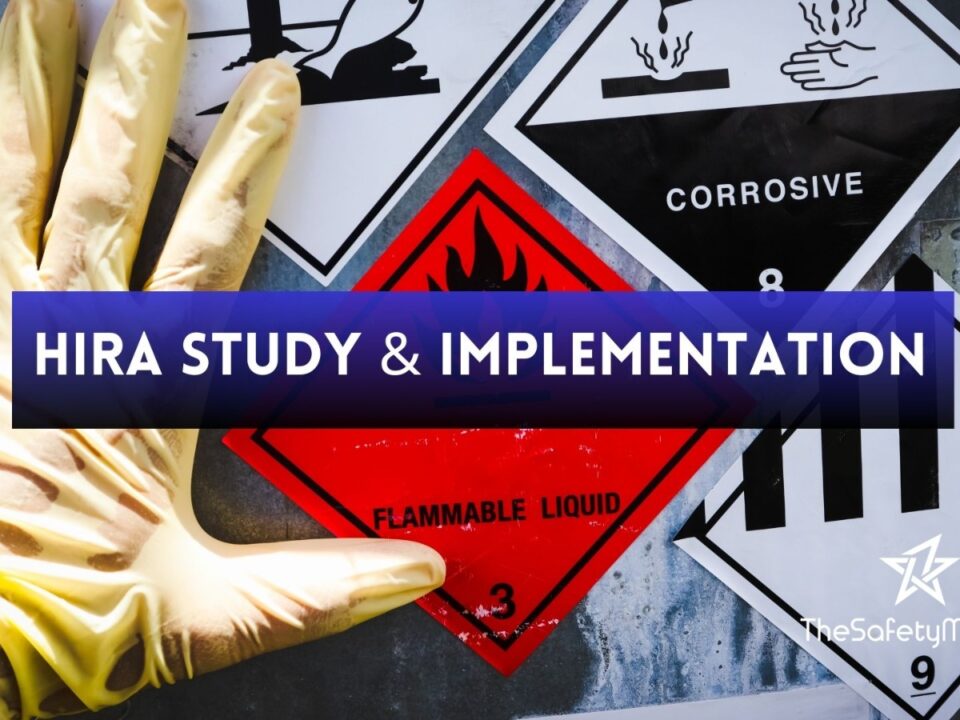HAZOP QRA and ERDMP Reports
Exploring the Versatility and Efficiency of TSM-Digitech: The Ultimate Safety Software Solution
September 14, 2023HAZOP Study and Training
September 15, 2023When it comes to ensuring the safety and efficiency of industrial processes, there are various tools and reports that play a crucial role. One such set of reports that stands out in the field is HAZOP (Hazard and Operability) analysis, Quantitative Risk Assessment (QRA), and Emergency Response and Disaster Management Plan (ERDMP) reports. These comprehensive documents not only identify potential hazards but also provide strategies to mitigate risks and effectively respond to emergencies.
In this article, we will dive deep into the world of HAZOP QRA and ERDMP reports, exploring their significance in enhancing industrial safety across a range of sectors. We will uncover the step-by-step process of conducting a HAZOP analysis, unravel the power of quantitative risk assessment, delve into developing effective emergency response plans, and much more.
Understanding HAZOP, QRA, and ERDMP Reports
HAZOP, QRA, and ERDMP reports are powerful tools that play a crucial role in enhancing operational safety and risk management in various industries. Each of these reports serves a distinct purpose yet complements one another in mitigating potential hazards and ensuring effective emergency response.
HAZOP (Hazard and Operability Study) is a systematic and structured approach used to identify potential hazards, assess risks, and evaluate the operability of complex systems. It scrutinizes every aspect of a process or system to identify deviations from design intent that may lead to hazardous conditions.
QRA (Quantitative Risk Assessment), on the other hand, employs advanced mathematical models to quantify risks associated with identified hazards. By considering various factors such as event probabilities, consequence analysis, and exposure scenarios, QRA provides a comprehensive understanding of the likelihood and potential impacts of accidents.
The Importance of HAZOP, QRA, and ERDMP Reports
HAZOP (Hazard and Operability Study), QRA (Quantitative Risk Assessment), and ERDMP (Emergency Response and Disaster Management Plan) reports play a paramount role in ensuring the safety, reliability, and resilience of complex industrial processes. These reports serve as invaluable tools for identifying potential hazards, evaluating risks, and developing effective strategies to mitigate them.
By conducting a thorough HAZOP analysis, industries gain insight into the critical operational aspects of their systems. This enables them to identify potential deviations from intended design conditions that could lead to hazardous situations. Similarly, QRA empowers organizations to quantitatively assess the magnitude of risks associated with specific scenarios by considering various factors such as probability, consequence severity, and potential impacts on human life, environment or assets. ERDMP reports provide a comprehensive framework for anticipating emergencies and outlining robust response plans to safeguard lives and minimize damage.
Together, these reports form an integrated approach towards risk management that instills confidence in stakeholders, regulatory bodies, employees, and the wider community. By investing in HAZOP studies, employing QRA methodologies effectively, and implementing well-crafted ERDMPs; organizations demonstrate their commitment to safety excellence while fostering trust within their industry ecosystem.
Step-by-Step Guide: How to Conduct a HAZOP Analysis
Embarking on a HAZOP analysis can be a complex yet rewarding endeavor, as it enables organizations to identify potential hazards and mitigate risks effectively. This step-by-step guide will provide you with a comprehensive roadmap to conduct a successful HAZOP analysis.
The first crucial step is to assemble a multidisciplinary team comprising individuals with diverse expertise and perspectives. This ensures comprehensive coverage and fosters creative brainstorming. Additionally, appointing a skilled facilitator who can guide the team through the process is essential for maintaining focus and efficiency.
Next, define the scope of the analysis by identifying the system or process under scrutiny. Establish clear boundaries and determine which deviations from normal operations will be evaluated. By clearly defining the scope, you ensure that all relevant aspects are considered without overwhelming the team with unnecessary details.
Now comes the heart of the analysis: breaking down the system into individual components or nodes. Each node represents an element that could potentially lead to hazards or errors. The team should scrutinize these nodes one by one, brainstorming potential deviations from normal operation modes and exploring their consequences.
To facilitate this process, utilize appropriate techniques such as brainstorming sessions, checklists, cause-and-effect diagrams, and prompt guides tailored to your specific industry or process. These aids help prompt creative thinking while ensuring thoroughness in identifying potential hazards.
Once deviations are identified for each node, evaluate their possible causes and consequences systematically. Determine their severity levels based on impact ratings such as likelihood of occurrence, potential harm to personnel or environment, financial implications, or reputational damage.
Unveiling the Power of Quantitative Risk Assessment (QRA)
Quantitative Risk Assessment (QRA) is a powerful tool that allows organizations to systematically analyze and evaluate risks associated with their operations. By employing numerical data, statistical models, and probability calculations, QRA provides a comprehensive understanding of potential hazards and their potential consequences. This enables decision-makers to prioritize risk mitigation strategies and allocate resources effectively.
One of the key strengths of QRA lies in its ability to provide a quantitative measure of risk. Unlike qualitative assessments that rely on subjective judgments, QRA employs objective data to estimate the likelihood and severity of different events. This approach instills confidence in stakeholders as they can assess risks based on empirical evidence rather than speculation or intuition.
Developing an Effective Emergency Response and Disaster Management Plan (ERDMP)
In today’s complex and interconnected world, the need for a robust Emergency Response and Disaster Management Plan (ERDMP) cannot be overstated. When unforeseen events strike, organizations must be prepared to respond swiftly and effectively, ensuring the safety of their employees, stakeholders, and the environment. The development of an ERDMP requires meticulous planning, collaboration across various departments, and a comprehensive understanding of potential risks.
An optimal ERDMP begins with a thorough risk assessment that identifies potential hazards and evaluates their likelihood and impact. This assessment serves as the foundation upon which effective response strategies can be built. By implementing proactive measures such as emergency drills, training programs, and regular equipment maintenance, organizations can ensure that they are well-prepared to handle emergencies.
Harnessing the Benefits of HAZOP, QRA, and ERDMP Reports
HAZOP, QRA, and ERDMP reports offer a multitude of benefits to organizations across various industries. By undertaking a comprehensive HAZOP analysis, companies can identify potential risks and hazards in their processes or systems. This proactive approach enables timely corrective actions to be implemented, thereby mitigating the chances of accidents or incidents that could lead to catastrophic consequences.
Moreover, through the utilization of Quantitative Risk Assessment (QRA) techniques, decision-makers can gain valuable insights into the likelihood and consequences of specific events. This information empowers organizations to prioritize resources and investments in risk reduction measures that yield the greatest impact. Additionally, by incorporating an effective Emergency Response and Disaster Management Plan (ERDMP), companies can ensure quick response times during emergencies while minimizing damage and protecting human lives.
Real-Life Examples: Success Stories of HAZOP, QRA, and ERDMP Implementations
Within the realm of process safety, numerous success stories stand as testaments to the efficacy of HAZOP, QRA, and ERDMP reports. One such example is a large-scale chemical plant that implemented a comprehensive HAZOP analysis across its operations. By meticulously examining potential hazards and identifying critical control measures, they were able to prevent incidents and enhance operational resilience.
In another remarkable case, an offshore oil rig adopted a robust QRA approach in assessing risks associated with its drilling activities. Through advanced modeling techniques and meticulous data analysis, they successfully identified potential dangers such as blowouts or fires. This enabled them to implement effective risk mitigation measures, ensuring the safety of both personnel and the environment.
Overcoming Challenges: Common Roadblocks and How to Tackle Them
Implementing HAZOP, QRA, and ERDMP reports can be a complex endeavor that may encounter various challenges along the way. However, with a proactive approach and the right strategies in place, these roadblocks can be overcome, ensuring a successful implementation of these vital risk management tools.
One common challenge faced during HAZOP analysis is resistance from personnel who may view it as a time-consuming process that disrupts their routine operations. To tackle this roadblock, it is crucial to emphasize the benefits of HAZOP analysis, such as identifying potential hazards and improving overall safety measures. By engaging employees in the process and communicating the positive impact it will have on their well-being and job security, their initial apprehension can transform into enthusiasm.
In addition to personnel resistance, another hurdle often encountered during QRA is data availability and accuracy. Incomplete or outdated data can hinder accurate risk assessment, leading to flawed conclusions. To address this challenge, organizations must prioritize data collection efforts by investing in comprehensive monitoring systems and conducting regular audits to ensure data integrity. Collaborating with external experts or industry partners who specialize in risk assessment methodologies can also enhance data accuracy.
When it comes to ERDMP implementation, one common stumbling block is inadequate communication among stakeholders involved in emergency response planning. This lack of coordination can result in delays or confusion during critical incidents. To overcome this challenge, organizations should establish robust communication channels through regular meetings, training sessions, drills, and simulations involving all relevant parties. Encouraging open dialogue between teams ensures smooth collaboration during emergencies.
In conclusion, despite
Ensuring Compliance: How HAZOP, QRA, and ERDMP Reports Align with Industry Standards
Compliance with industry standards is a crucial aspect of any process safety management system. HAZOP, QRA, and ERDMP reports serve as valuable tools to ensure that organizations meet the highest levels of safety and regulatory requirements. These reports align with well-established industry standards to provide a comprehensive framework for managing risks and emergency response planning.
HAZOP studies adhere to recognized guidelines such as those outlined in the International Electrotechnical Commission’s IEC 61882 standard. This ensures that each analysis follows a systematic approach in identifying hazards, evaluating their severity, and proposing appropriate safeguards. Similarly, QRA reports conform to internationally accepted methodologies like those outlined by the Center for Chemical Process Safety (CCPS) or the UK Health and Safety Executive (HSE). These methodologies provide a structured approach to assess risk probabilities and consequences comprehensively.
In terms of ERDMP, industry standards such as API RP 752 or NFPA 1600 guide organizations in developing robust emergency response plans. By adhering to these standards, companies can ensure their plans are tailored to address potential scenarios effectively while meeting regulatory obligations.
By aligning HAZOP, QRA, and ERDMP reports with industry standards, organizations can confidently demonstrate their commitment to process safety excellence. Compliance not only fosters trust among stakeholders but also ensures that operations are conducted at the highest level of safety possible.
The Future of HAZOP, QRA, and ERDMP: Innovations and Emerging Trends
As we delve into the future of HAZOP, QRA, and ERDMP reports, a realm of exciting innovations and emerging trends comes to light. The field of process safety is continuously evolving, driven by advancements in technology and a collective commitment to enhancing risk management practices.
One notable trend poised to shape the future is the integration of artificial intelligence (AI) into HAZOP analysis. By leveraging machine learning algorithms, AI can identify potential hazards with greater efficiency and accuracy than ever before. This not only expedites the analysis process but also ensures comprehensive risk assessment.
Conclusion
In conclusion, HAZOP, QRA, and ERDMP reports play a vital role in ensuring the safety and security of industries across various sectors. By meticulously analyzing potential hazards, quantifying risks, and formulating robust emergency response plans, these reports provide invaluable insights for effective decision-making. As industry standards evolve and innovation continues to shape the field, we can anticipate even more sophisticated approaches to risk management. With a collective commitment to implementing and refining HAZOP, QRA, and ERDMP practices, we can confidently stride towards a future where industrial operations are safeguarded against potential catastrophes. Let us embrace these tools as pillars of progress on our journey towards a safer world.


